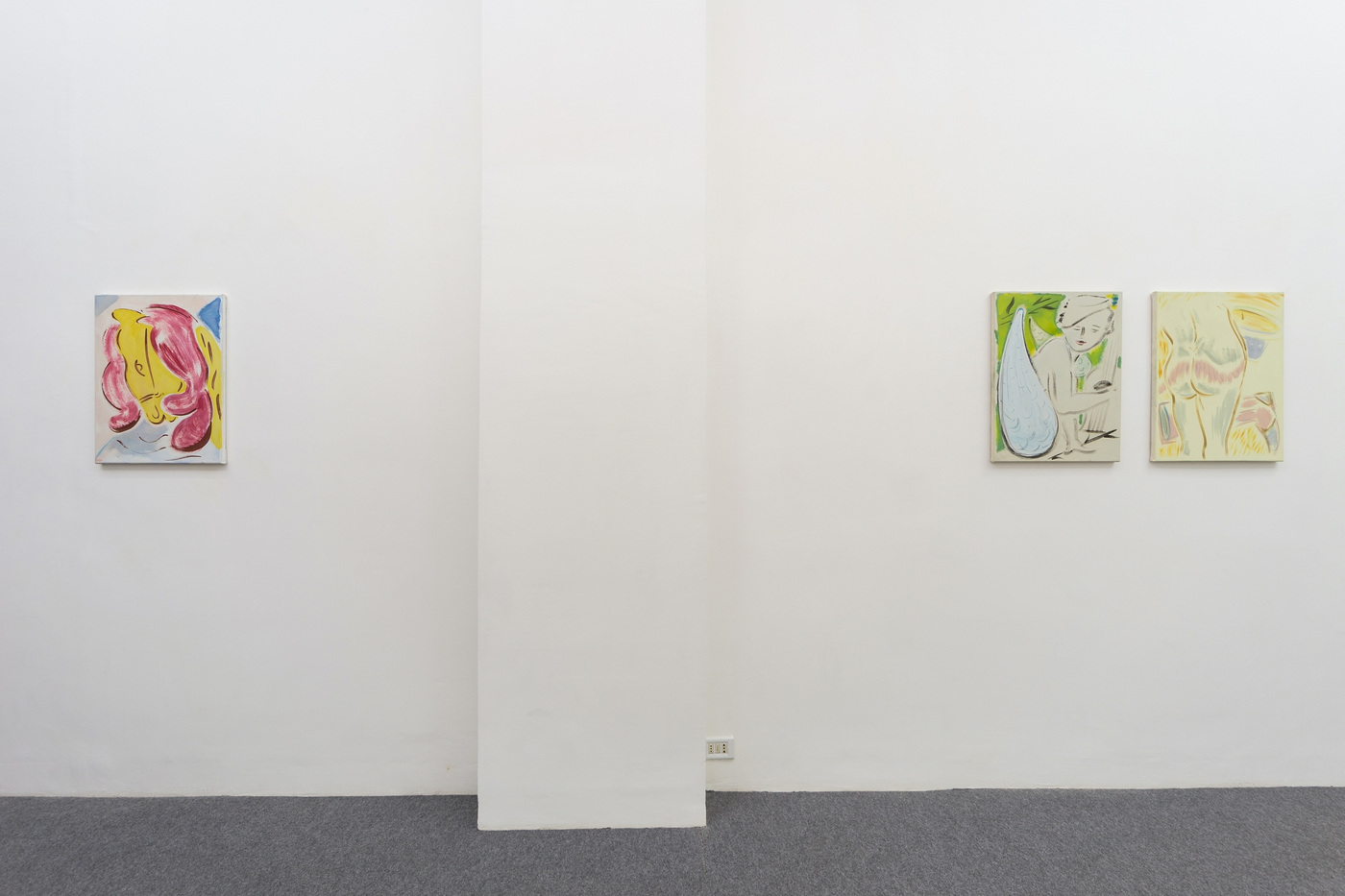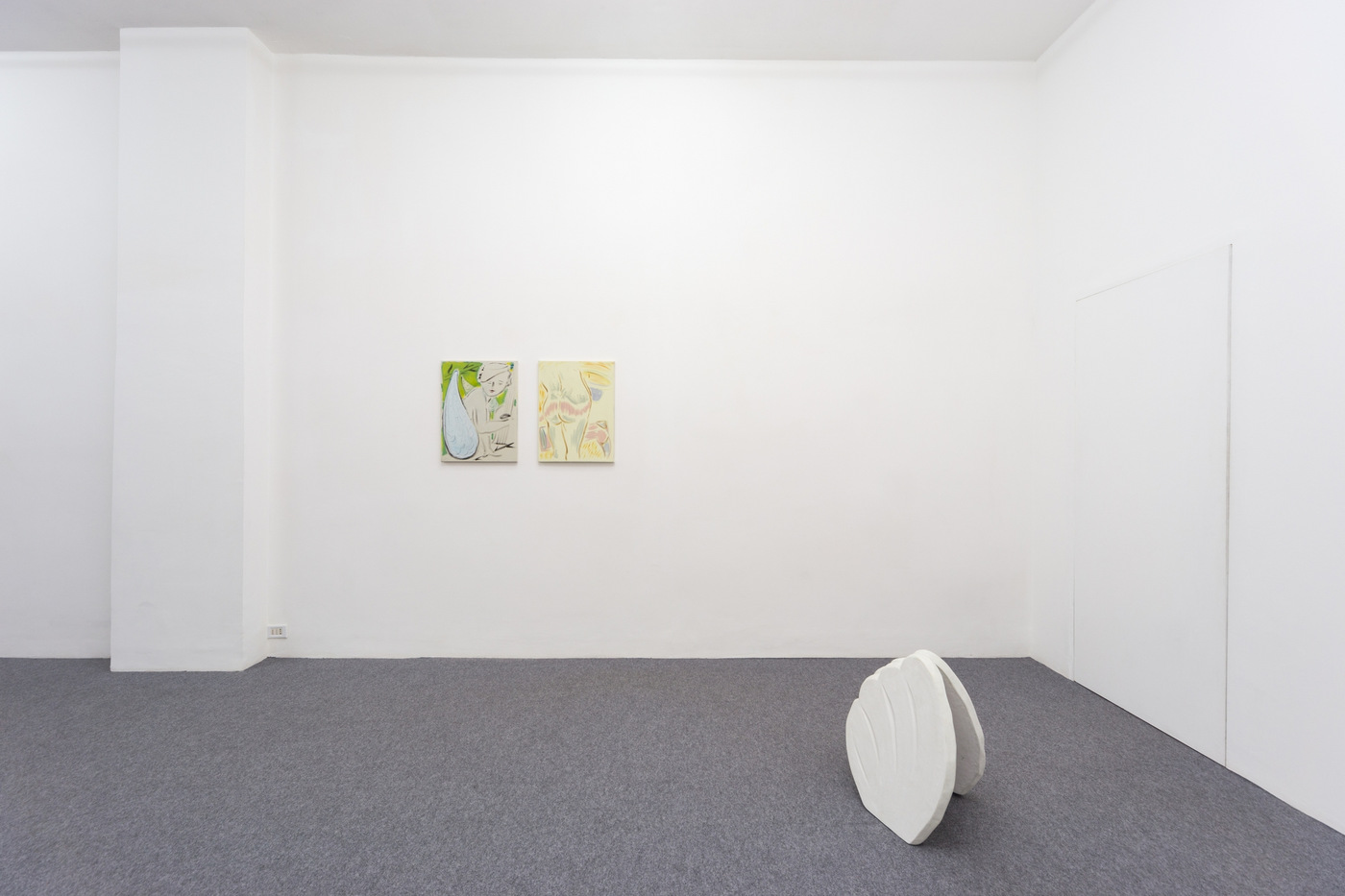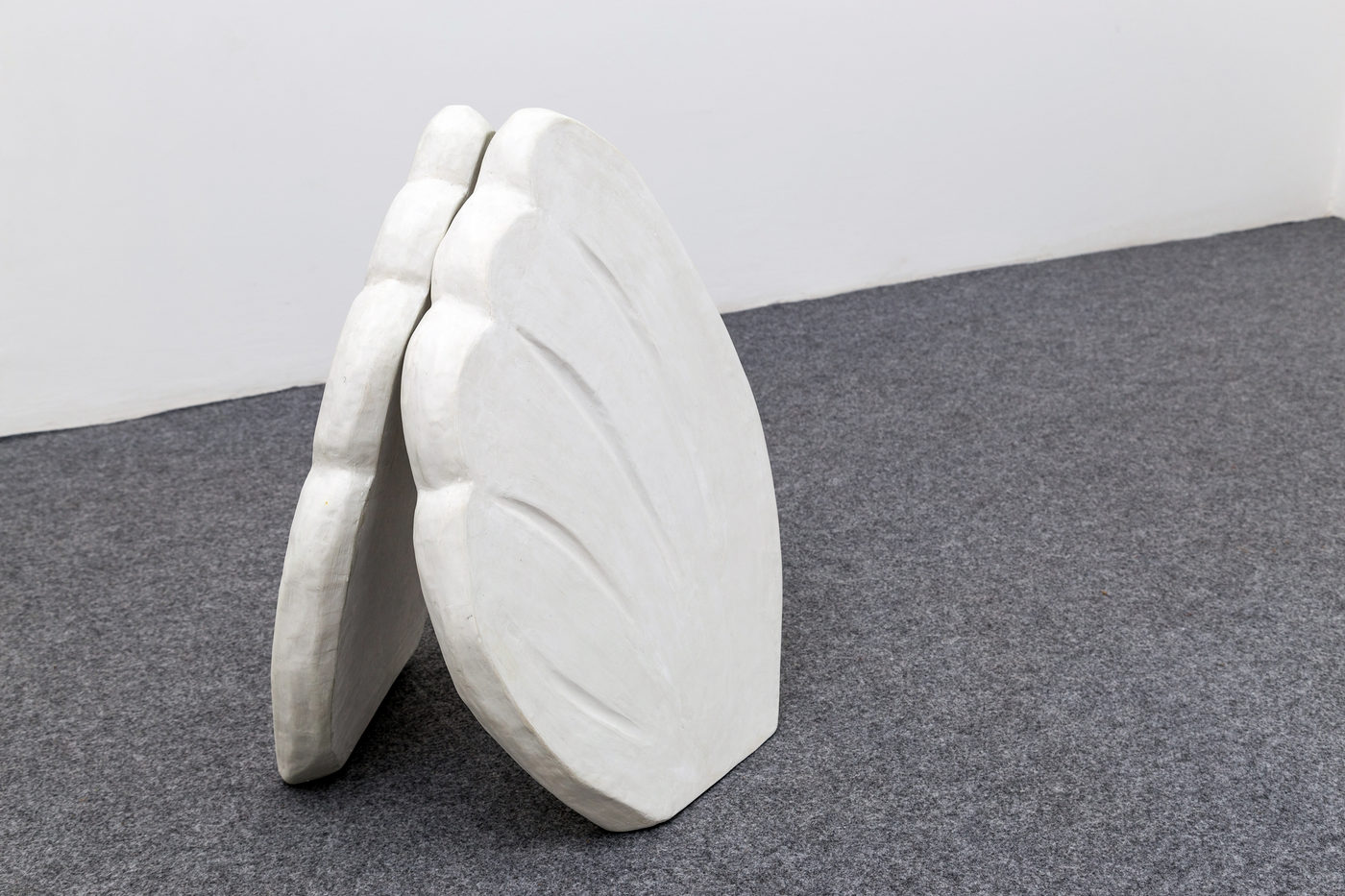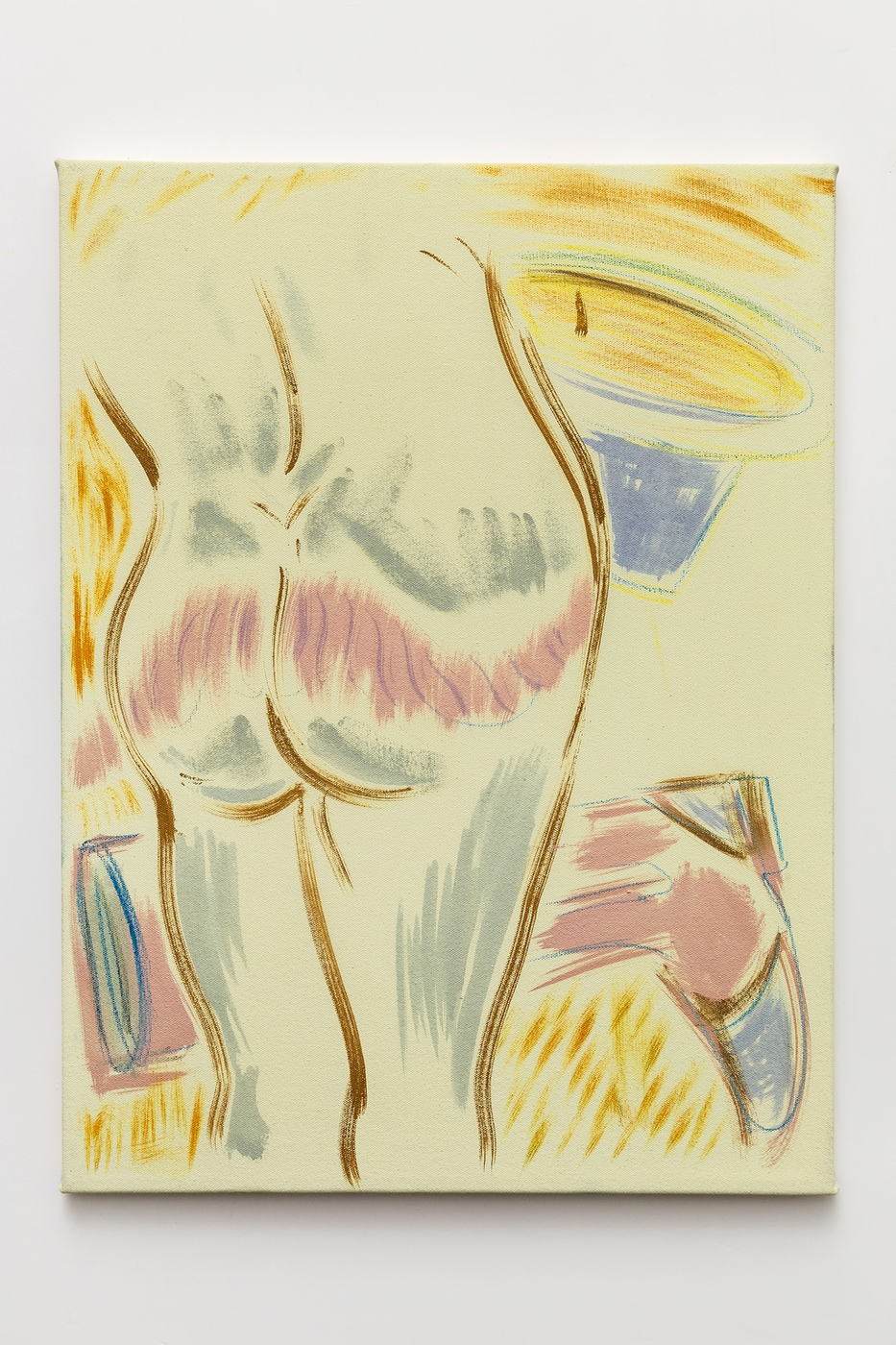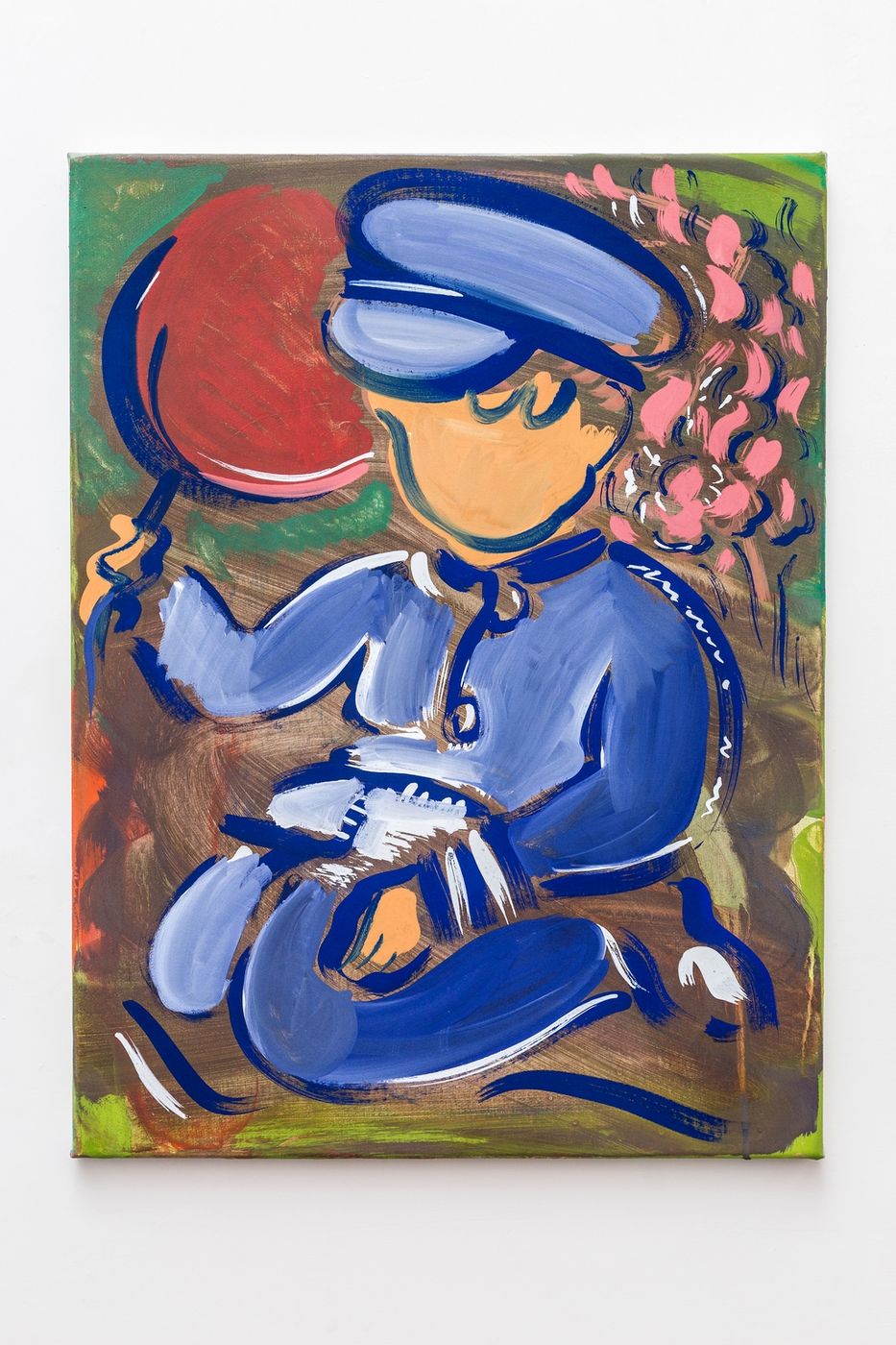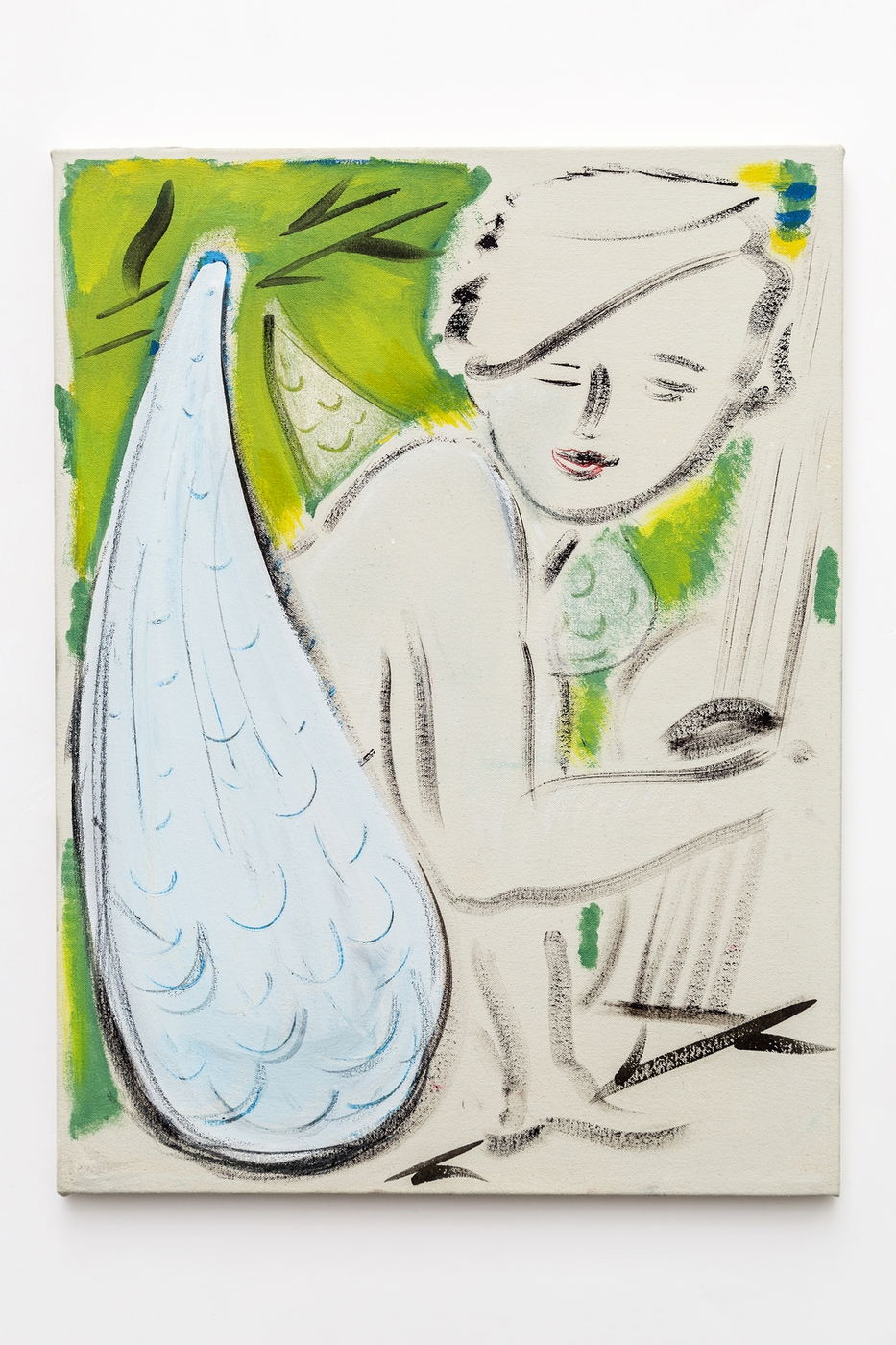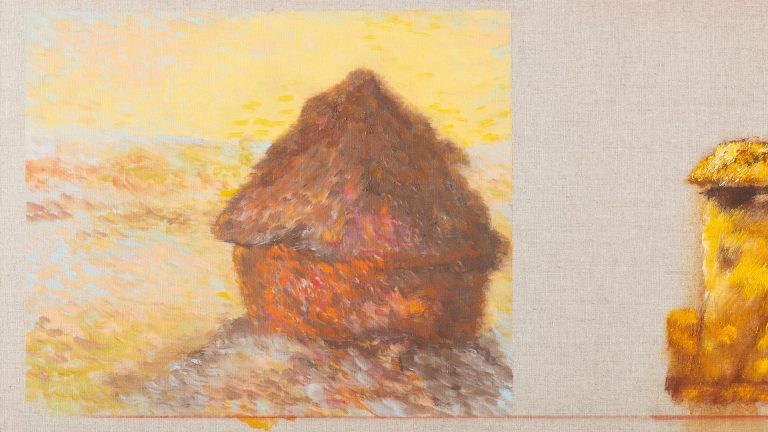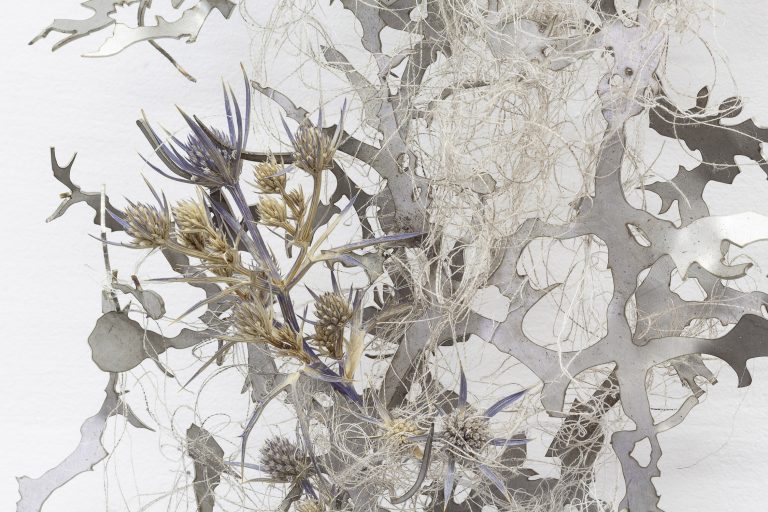Artist: Grant Foster
Exhibition title: Popular Insignia
Venue: Acappella, Naples, Italy
Date: May 9 – July 2, 2016
Photography: Danilo Donzelli, images copyright and courtesy the artist and Acappella, Naples
Acappella is pleased to present Popular Insignia, a solo exhibition by British artist Grant Foster. This is Foster’s first solo presentation in Italy and also his first exhibition in Naples.
Popular Insignia embeds elements of the traditional hero into Foster’s new collection of painted and sculptural works. The hero acts as the central metaphor for Foster’s continuing investigation into morality, the dictatorship of absolutes and how our current political climate negates pluralism in exchange for dogmatic truth.
In “Everyone for Themselves and God Against All”, a cutesy young girl drawn in terse charcoal line, cradles a geometric Z. This motif is elemental within Foster’s practice, extracted from the square jawline of the masculine hero often found delineated within the shorthand of comic books, Foster re-appropriates this motif with esoteric and enigmatic effect. A cast of churlish characters complete with props, populate the canvases; wings, tongues, boots and swans act as cultural idioms that traverse the notion of taste.
It is against this backdrop that Foster sees his painted youths. Compositionally emblematic and on the surface casually executed, they offer a complex syntax that borrows from so called anti-art and populist aesthetics, such as the amusement arcades of the English seaside towns where he grew up, provincial news sources and gift-shop souvenirs, to create a form of semi-satirical resistance against the homogeneity of western cultural orthodoxy, which Foster describes as the embodiment of the fictitious hero itself. Citing Rene Magritte’s Periode Vache as central to this new body of work, he is working under the auspices of pleasure to create a persuasive and paradoxical visual language, rooted in subversion, satire and political commentary.
Grant Foster, born 1982, UK, lives and works in London and graduated from The Royal College of Art in 2012. Foster’s recent solo exhibitions include, Salad Days, Ana Cristea Gallery, New York (2015); Holy Island, Chandelier Projects, London (2014); The Walnut Tree, Chinashop, Oxford (2013). Recent group exhibitions include Carnival Glass, Block 336, London (2015), Rx for Viewing w/Jesse Wine, Ana Cristea Gallery, New York (2014) and Bloomberg New Contemporaries, Spike Island, Bristol and ICA, London (2013). Grant Foster was a prizewinner in John Moores 25, Liverpool and will attend The Rome Fellowship in Contemporary Art at The British School of Rome later this year.
* * *
A dense fauna of misfits and caricatures, symbolic transfigurations and hybrid creatures, bodies pushed to the fore of remote scenarios and figures being obliterated in the name of an insipid form of beauty. The subjects of Grant Foster’s works appear as a series of characters crowding a theatre of fundamental discrepancies, of inescapable illusions produced through strategies of aestheticization. Born from the deconstruction of a lowbrow populist aesthetic, they articulate through the characterization of its decadent icons and fetishes.
Throughout his most recent body of works, Grant has been extensively drawing from the visual language of emblem books, not only exploring inherent modes of representation and recurrent imageries, but also more specifically unravelling their propagandistic function.
Since these publications were mainly conceived as instruction manuals, defining and disseminating models of morality through motifs of innocence and grace, he delved into this imaginary re-contextualizing it and creating pictures of genuine rural life and playful encounters, symbols of beauty and idyllic scenarios. However the key motivation driving Grant Foster in this specific direction is a desire to question the relevance of such forms of visual idealization and propaganda within the current context, exploring potential parallels between those publishing formats and contemporary examples of popular press.
What might emblem books and tabloids ever have in common?
If we were to look at these two different historical paradigms, what shared elements would we be able to identify?
I would say allegories, even caricatures.
Ideas and values being given human features and translated into images.
Subjects surgically constructed to incarnate certain fantasies and radicalized in their traits so to effectively project them.
As starlets and pop icons featured on popular magazines are presented as symbols of ideal beauty and success, their bodies are being spectacularized to the point of often turning them into paradoxical figures, skirting the very definition of grotesque. Consistently with such operation, Grant pushes the core traits of his subjects to the extreme, producing a series of surreal and almost intoxicating parodies. However his work extends way beyond the aestheticization of socio-cultural values and norms. By extrapolating certain forms of visual idealization from their usual circuits of dissemination, the artist intends to investigate ways in which their rhetoric might infiltrate and settle in our collective imagination.
How do images penetrate and sediment within our individual and collective identity? How do they come to colonize and influence the way we perceive ourselves and the world? And if they so by do instigating processes of identification how are these triggered?
Departing from such questions in the present body of works Grant particularly emphasizes the power of identification and memory. In the paintings he seems to nearly dismiss any form of collecting compositions, bringing the subjects to the very fore of the image and turning them into iconic presences, each one confronting the viewer directly.
Via each one of these pictures Grant reflects upon the very movement of abstraction that crystalizes an idea into an image, therefore instigating a more or less subtle mechanism of persuasion. As a result of such abstracting gesture his subjects are thought and developed as characters. Unlike masks they don’t conceal neither they disguise, instead they incarnate, therefore performing a completely different function. They appear as entities embodying a schizophrenic relation between an idealized projection and the insidious reality behind it.
In a majority of Grant’s works, subtle elements of tension and disturbance are revealed, insinuating joyful scenes and beautifully drawn figures, constantly trapping his subjects in a state of intrinsic ambiguity. Allegories of spiritual ascension are foregrounded by an act of dogmatic prostration, a graceful pastel figure is defaced by colour stripes resembling a nationalistic symbol and the generous shapes of a pin-up are paired with a swan, an image that particularly recurs within Grant’s work as a metaphor of dualism.
Being conceived as characters these subjects are inserted within Grant’s fragmented narrative, hence recurring as this unfolds throughout his long-term practice. Although created as archetypical figures that maintain their fundamental features across a number of declinations, they move from one composition to another, camouflaging as they enter different costumes and roles. Operating as shape-shifting entities they do not simply change skin across different works but also transform within the trajectory of each piece. Regardless of their sharp and controlled appearance, most of them is neither pre-conceived nor designed, but instead emerges from the process of questioning the possibilities of an image.
A dialectic movement, a nearly obsessive gesture, perhaps the same one that has pushed me throughout these few paragraphs in deconstructing, disarticulating and digging into the multiplicity of personas and cameos inhabiting Grant Forster’s oeuvre. Something like a compulsive and looping effort to open up his caricatures. A crowd of anti-heroes colonizing the complex symbolic apparatus Grant Foster has created by weaving together the rhetoric of idealization and popular imaginaries.
– Bianca Baroni
Grant Foster, Wings, 2016
Grant Foster, Wings, 2016
Grant Foster, The Meta Leader, 2016
Grant Foster, Porc, 2016
Grant Foster, The Heliocentric World, 2016
Grant Foster, The Guerrilla, Warm Blood, Weak Arm, 2016
Grant Foster, Ascension (Triumph of the Ellipse, 2016
Grant Foster, Leisure, 2016
Grant Foster, Groupthink, 2015
Grant Foster, Everyone for Themselves and God aga, 2016











